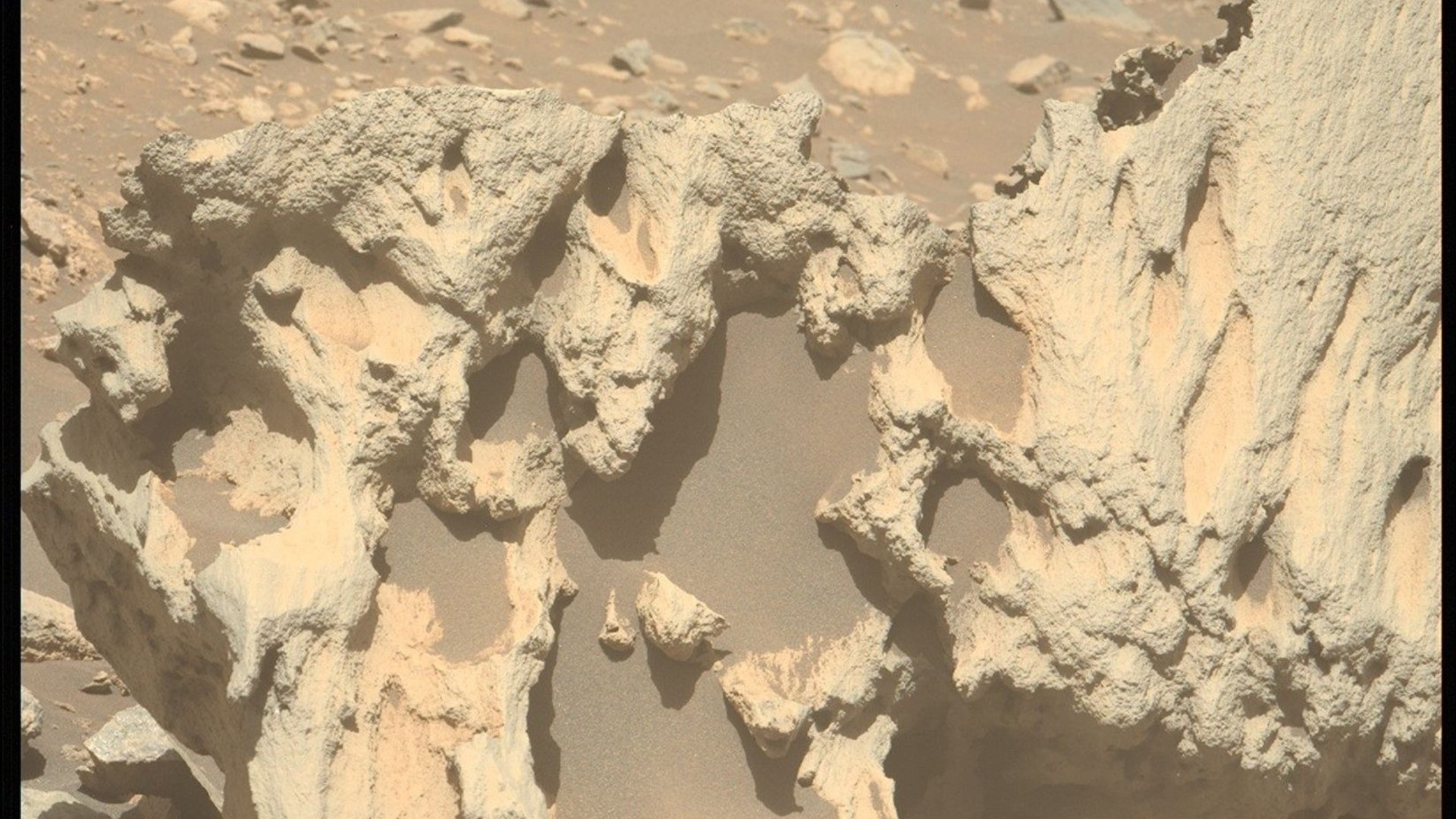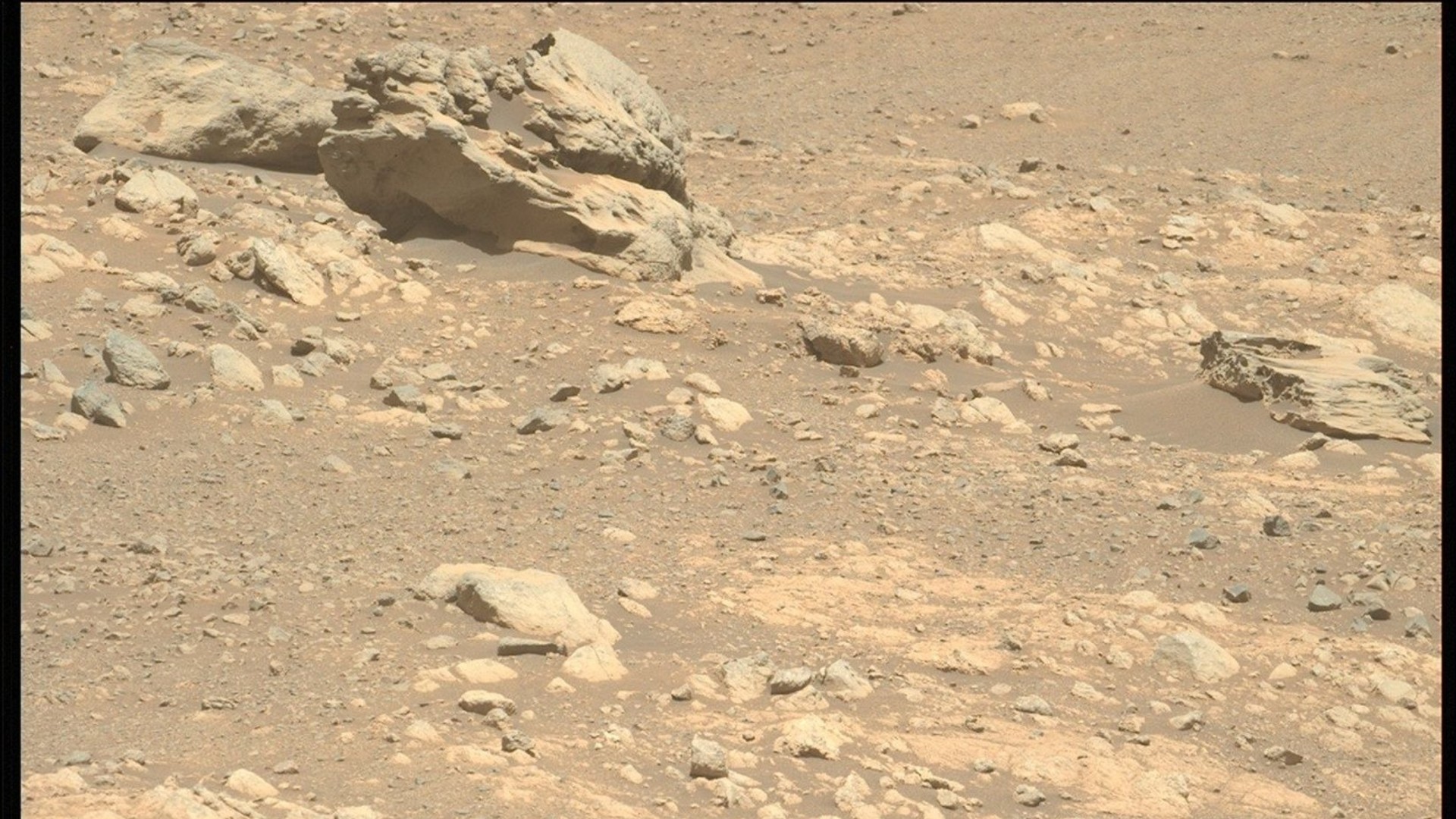After 5 years on Mars, NASA's Perseverance rover may have found its 1st meteorite (photos)
NASA's Perseverance rover spotted a possible space rock on the surface of Mars. The meteorite's nickname is 'Phippsaksla.'

NASA's Perseverance Mars rover has found a possible meteorite on the surface of the Red Planet.
Perseverance spotted an unusual "sculpted, high-standing" rock nestled among "low-lying, flat and fragmented surrounding rocks", which got the attention of scientists right away, according to a blog post posted Nov. 13 on NASA's website written by Candice Bedford, a research scientist at Purdue University. The NASA Jet Propulsion Laboratory rover spotted Phippsaksla on Sept. 2, initially using the left Mastcam-Z camera high on the rover's mast. Sept. 2 was Sol 1612 of the mission; a sol is a Martian day, which is slightly longer than Earth's.
Perseverance next used its laser instrument, known as SuperCam, to show that the nearly three-foot-long (31 inches, or 81 centimeters) rock is made of iron and nickel, which matches what we know about the composition of cores of large asteroids in the solar system. If its origin is confirmed, this would be Perseverance's first meteorite find since arriving at the Red Planet on Feb. 18, 2021.
Asteroids are large space rocks that are typically made of leftover material from when the solar system was formed, 4.5 billion years ago, before larger bodies like planets and moons came together. Meteoroids — smaller space rocks — often are fragments of asteroids, and if one of meteoroids makes it to the surface of a planet or moon, these are called meteorites.
The Perseverance rover team nicknames its science targets and sites for easy public identification. The suspected meteorite has been named "Phippsaksla", a name taken from an area in Svalbard, Norway. The site where the rock was found, "Vernodden," is also based on a location in Svalbard.

While this is Perseverance's first suspected meteorite find, it's far from the first space rock ever found on the Red Planet.
Perseverance's predecessor rover Curiosity, which has been active on the surface since 2012, has found several iron-nickel meteorites in the Gale crater region and a mountain it is climbing, called Aeolis Mons or Mount Sharp. Notable examples include the huge, 39-inch (1-meter) "Lebanon" meteorite found in 2014, and another space rock nicknamed "Cacao", found in 2023.
Breaking space news, the latest updates on rocket launches, skywatching events and more!
The previous generation of NASA rovers were known as the Mars Exploration Rovers, which included Opportunity (operational on Mars from 2004 through 2018) and Spirit (2004-11). Since those robotic explorers also found several iron-nickel meteorites themselves, NASA officials had been surprised at Perseverance's lack of space rock finds.
For the past year or so, Perseverance has been carefully examining the rim of its landing site, Jezero crater. Bedford noted that Jezero crater should have more meteorites, "particularly given its similar age to Gale crater and number of smaller impact craters, suggesting that meteorites did fall on the crater floor, delta, and crater rim throughout time."
But hunting meteorites is just a side job for Perseverance. The rover landed on the floor of the 28-mile-wide (45 kilometers) crater with the primary mission of hunting for possible signs of past life on Mars and to gather samples for a possible future return to Earth.
Just last month, NASA announced the rover found tantalizing chemical fingerprints that might show evidence of chemical reactions between sediment and organic matter, but the rover's limited selection of instruments mean the samples would have to be hauled back to Earth before a conclusive determination could be made.

Elizabeth Howell (she/her), Ph.D., was a staff writer in the spaceflight channel between 2022 and 2024 specializing in Canadian space news. She was contributing writer for Space.com for 10 years from 2012 to 2024. Elizabeth's reporting includes multiple exclusives with the White House, leading world coverage about a lost-and-found space tomato on the International Space Station, witnessing five human spaceflight launches on two continents, flying parabolic, working inside a spacesuit, and participating in a simulated Mars mission. Her latest book, "Why Am I Taller?" (ECW Press, 2022) is co-written with astronaut Dave Williams.
You must confirm your public display name before commenting
Please logout and then login again, you will then be prompted to enter your display name.